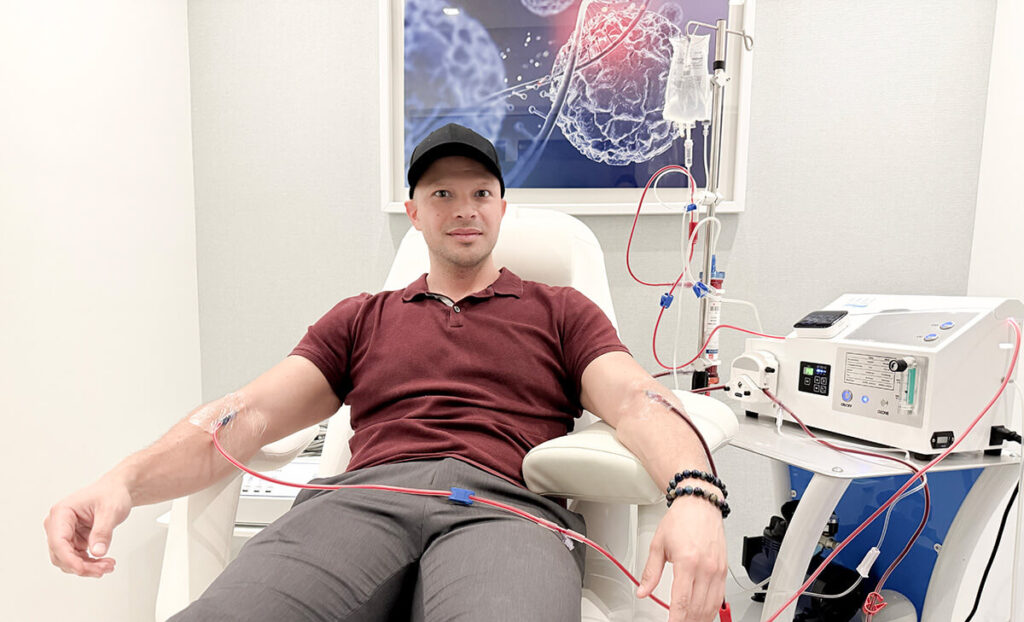Parkinson’s disease treatment has traditionally focused on managing symptoms rather than addressing the root cause of the disease. As a progressive neurodegenerative disorder, Parkinson’s disease (PD) affects millions of individuals worldwide, causing motor and non-motor symptoms that significantly impact quality of life.
Current Parkinson’s disease treatment options include medication, physical therapy, and in some cases, surgical interventions like deep brain stimulation. However, novel regenerative medicine techniques, such as the S.O.N.G Laser Protocol and the Eckel Protocol, offer promising alternatives for Parkinson’s disease treatment.
Understanding the S.O.N.G Laser and Eckel Protocol in Parkinson’s Disease Treatment
The Role of the S.O.N.G Laser Protocol in Parkinson’s Disease Treatment
The S.O.N.G Laser Protocol is a groundbreaking method in Parkinson’s disease treatment. It involves the activation of autologous human Very Small Embryonic Like (hVSEL) stem cells in Platelet Rich Plasma (PRP) using a specialized modulated red laser known as the S.O.N.G Laser.
This innovative approach aims to enhance the body’s regenerative capabilities, potentially offering relief from Parkinson’s disease symptoms. Unlike conventional Parkinson’s disease treatment options, the SONG Laser Protocol may help in cellular repair and neuroprotection.
The Eckel Protocol’s Contribution to Parkinson’s Disease Treatment
The Eckel Protocol is another complementary approach to Parkinson’s disease treatment. This protocol integrates multiple therapies, including heavy metal detoxification, microbiome analysis, blood workups, and urinary metabolite assessments to correct physiological imbalances.
One of its key components is the week-long Brain Regeneration Camp, where patients receive the S.O.N.G Laser Protocol alongside additional bioenergetic acupuncture, hyperbaric oxygen therapy, and neuroregenerative therapies. These elements collectively contribute to an integrative Parkinson’s disease treatment strategy.
Case Studies Demonstrating the Efficacy of Parkinson’s Disease Treatment with the S.O.N.G Laser and Eckel Protocol
Case Study 1: Improvements in a 73-Year-Old Parkinson’s Patient
A 73-year-old female patient undergoing Parkinson’s disease treatment with the S.O.N.G Laser Protocol showed moderate improvements. She received 67mL of SONG Laser activated PRP intravenously and 1mL intra-nasally. The Parkinson’s Disease Questionnaire-39 (PDQ-39) score improved post-treatment, indicating reduced tremors and an increased sense of well-being. These results highlight the potential of the SONG Laser Protocol as an effective Parkinson’s disease treatment.
Case Study 2: Significant Progress in a 62-Year-Old Patient
Another patient, aged 62, underwent the same Parkinson’s disease treatment regimen. The patient received 50mL of S.O.N.G Laser activated PRP intravenously and 1mL intra-nasally. The PDQ-39 score showed substantial improvement post-treatment, suggesting enhanced neurophysiological function and stability. These findings further support the potential of combining the SONG Laser and Eckel Protocol for Parkinson’s disease treatment.
The Science Behind Parkinson’s Disease Treatment Using SONG Laser Therapy
Mechanism of Action in Parkinson’s Disease Treatment
One of the unique aspects of the S.O.N.G Laser Protocol in Parkinson’s disease treatment is its ability to activate hVSEL stem cells. These stem cells play a crucial role in regenerative medicine by promoting cellular repair and reducing neurodegeneration. The S.O.N.G Laser’s modulated light stimulates these cells, facilitating their migration to damaged brain regions, which is essential for effective Parkinson’s disease treatment.
Benefits of Using Stem Cells in Parkinson’s Disease Treatment
Stem cell-based therapies, such as those employed in the S.O.N.G Laser Protocol, provide several advantages for Parkinson’s disease treatment, including:
- Neuroprotection: Reducing neuronal damage and promoting brain cell survival.
- Inflammation Reduction: Minimizing neuroinflammation, a key factor in Parkinson’s progression.
- Improved Motor Function: Enhancing motor control by replenishing dopamine-producing neurons.
The Future of Parkinson’s Disease Treatment
Challenges and Future Research in Parkinson’s Disease Treatment
Despite the promising results of the S.O.N.G Laser and Eckel Protocol, further research is needed to validate their efficacy in Parkinson’s disease treatment. A placebo-controlled clinical trial is necessary to determine long-term benefits and safety. Understanding the precise mechanisms through which these protocols work could revolutionize Parkinson’s disease treatment in the future.
Integrating S.O.N.G Laser and Eckel Protocol into Mainstream Parkinson’s Disease Treatment
As regenerative medicine continues to evolve, integrating the S.O.N.G Laser and Eckel Protocol into standard Parkinson’s disease treatment could provide patients with an alternative, less invasive approach. By leveraging the body’s natural healing mechanisms, these therapies have the potential to complement existing Parkinson’s disease treatment strategies.
Parkinson’s disease treatment has traditionally been limited to symptom management rather than addressing the underlying causes of the disease. However, emerging therapies such as the S.O.N.G Laser Protocol and the Eckel Protocol are paving the way for innovative approaches in Parkinson’s disease treatment.
Case studies suggest that these methods may offer neuroprotective benefits and improved quality of life for patients. With further research and clinical validation, these regenerative techniques could redefine the future of Parkinson’s disease treatment.
Reach Us to get a consultation for S.O.N.G LASER V CELLS THERAPY here.





